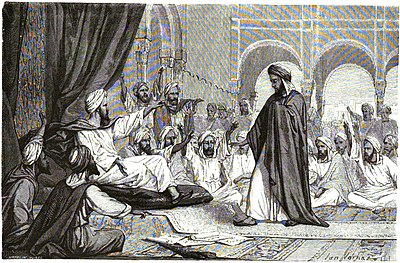
Almohad Caliphate
The Almohad Caliphate was a North African Berber Muslim empire founded in the 12th century. At its height, it controlled much of the Iberian Peninsula (Al Andalus) and North Africa (the Maghreb).
The Almohad movement was founded by Ibn Tumart among the Berber Masmuda tribes, but the Almohad caliphate and its ruling dynasty were founded after his death by Abd al-Mu'min al-Gumi. Around 1120, Ibn Tumart first established a Berber state in Tinmel in the Atlas Mountains. Under Abd al-Mu'min (r. 1130–1163) they succeeded in overthrowing the ruling Almoravid dynasty governing Morocco in 1147, when he conquered Marrakesh and declared himself caliph. They then extended their power over all of the Maghreb by 1159. Al-Andalus soon followed, and all of Muslim Iberia was under Almohad rule by 1172.
The turning point of their presence in the Iberian Peninsula came in 1212, when Muhammad III, "al-Nasir" (1199–1214) was defeated at the Battle of Las Navas de Tolosa in the Sierra Morena by an alliance of the Christian forces from Castile, Aragon and Navarre. Much of the remaining Moorish dominion in Iberia was lost in the ensuing decades, with the cities of Córdoba and Seville falling to the Christians in 1236 and 1248 respectively.
The Almohads continued to rule in Africa until the piecemeal loss of territory through the revolt of tribes and districts enabled the rise of their most effective enemies, the Marinids, from northern Morocco in 1215. The last representative of the line, Idris al-Wathiq, was reduced to the possession of Marrakesh, where he was murdered by a slave in 1269; the Marinids seized Marrakesh, ending the Almohad domination of the Western Maghreb.
























